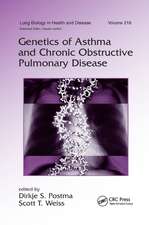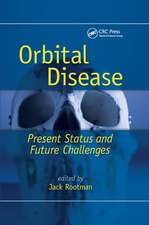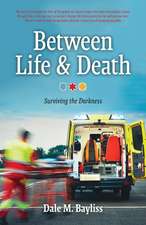Particle Toxicology
Editat de Ken Donaldson, Paul Bormen Limba Engleză Paperback – 23 oct 2019
Responding to the evolving trend of consumer applications for particulate matter, Particle Toxicology provides the comprehensive resource for current knowledge from which to develop ne
Preț: 512.16 lei
Preț vechi: 602.54 lei
-15% Nou
Puncte Express: 768
Preț estimativ în valută:
98.01€ • 106.43$ • 82.33£
98.01€ • 106.43$ • 82.33£
Carte tipărită la comandă
Livrare economică 22 aprilie-06 mai
Preluare comenzi: 021 569.72.76
Specificații
ISBN-13: 9780367389611
ISBN-10: 0367389614
Pagini: 460
Dimensiuni: 178 x 254 x 23 mm
Greutate: 1.09 kg
Ediția:1
Editura: CRC Press
Colecția CRC Press
ISBN-10: 0367389614
Pagini: 460
Dimensiuni: 178 x 254 x 23 mm
Greutate: 1.09 kg
Ediția:1
Editura: CRC Press
Colecția CRC Press
Public țintă
Professional ReferenceCuprins
An Introduction to Particle Toxicology: From Coal Mining
to Nanotechnology, Mineralogy and Structure of Pathogenic Particles, Particle Dosimetry: Deposition and Clearance from the Respiratory Tract and Translocation towards Extra-Pulmonary Sites, Particulate Air Pollutants and Small Airway Remodeling, Particle-Mediated Extracellular Oxidative Stress in the Lung, Particles and Cellular Oxidative and Nitrosative Stress, Interaction of Particles with Membranes, B. Rothen-Rutishauser, Particle-Associated Metals and Oxidative Stress in Signaling, Proinflammatory Effects of Particles on Macrophages and Epithelial Cells, Cell-Signaling Pathways Elicited by Particlates, Particle-Associated Organics and Proinflammatory Signaling, The Asbestos Model of Interstitial Pulmonary Fibrosis: TNF-a and TGF-b1 as Mediators of Asbestos-Induced Lung Fibrogenesis, Effects of Particles on the Immune System, Effects of Particles on the Cardiovascular System, Susceptibility to Particle Effects, Genotoxic Effects of Particles, Approaches to the Toxicological Testing of Particles, K. Donaldson, Models for Testing the Pulmonary Toxicity of Particles: Lund Bioassay Screening Studies in Male Rats with a New Formulation of TiO2 Particulates, Air Pollution and Human Brain Pathology: A Role for Air Pollutants in the Pathogensis of Alzheimer’s Disease, Biologically-Based Lung Dosimetry and Exposure-Dose-Response Models for Poorly Soluble Inhaled Particles, Nanoparticles in Medicine, The Toxicology of Inhaled Particles: Summing Up an Emerging Conceptual Framework, Index
to Nanotechnology, Mineralogy and Structure of Pathogenic Particles, Particle Dosimetry: Deposition and Clearance from the Respiratory Tract and Translocation towards Extra-Pulmonary Sites, Particulate Air Pollutants and Small Airway Remodeling, Particle-Mediated Extracellular Oxidative Stress in the Lung, Particles and Cellular Oxidative and Nitrosative Stress, Interaction of Particles with Membranes, B. Rothen-Rutishauser, Particle-Associated Metals and Oxidative Stress in Signaling, Proinflammatory Effects of Particles on Macrophages and Epithelial Cells, Cell-Signaling Pathways Elicited by Particlates, Particle-Associated Organics and Proinflammatory Signaling, The Asbestos Model of Interstitial Pulmonary Fibrosis: TNF-a and TGF-b1 as Mediators of Asbestos-Induced Lung Fibrogenesis, Effects of Particles on the Immune System, Effects of Particles on the Cardiovascular System, Susceptibility to Particle Effects, Genotoxic Effects of Particles, Approaches to the Toxicological Testing of Particles, K. Donaldson, Models for Testing the Pulmonary Toxicity of Particles: Lund Bioassay Screening Studies in Male Rats with a New Formulation of TiO2 Particulates, Air Pollution and Human Brain Pathology: A Role for Air Pollutants in the Pathogensis of Alzheimer’s Disease, Biologically-Based Lung Dosimetry and Exposure-Dose-Response Models for Poorly Soluble Inhaled Particles, Nanoparticles in Medicine, The Toxicology of Inhaled Particles: Summing Up an Emerging Conceptual Framework, Index
Descriere
Responding to the evolving trend of consumer applications for particulate matter, thisis a comprehensive resource for information from which to develop new concepts to understanding particle actions, measurement, testing, and pathogenic exposure to fine and ultrafine particles. It reviews the mechanisms and properties of pathogenic particles and their pathogenic effects. Contributions from leading researchers address particle-associated pro-inflammatory effects and inflammatory signaling, oxidative and nitrosative stress, particulate interactions in the pulmonary, cardiovascular, and central nervous systems, as well as genotoxic effects of nanoparticles and other particles.










